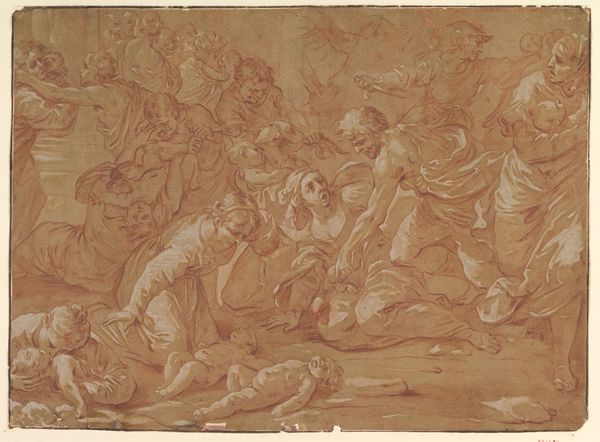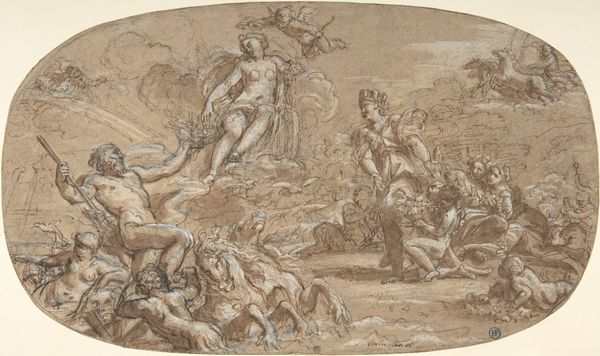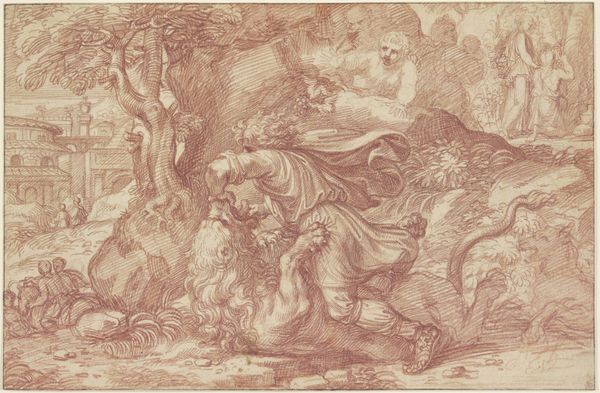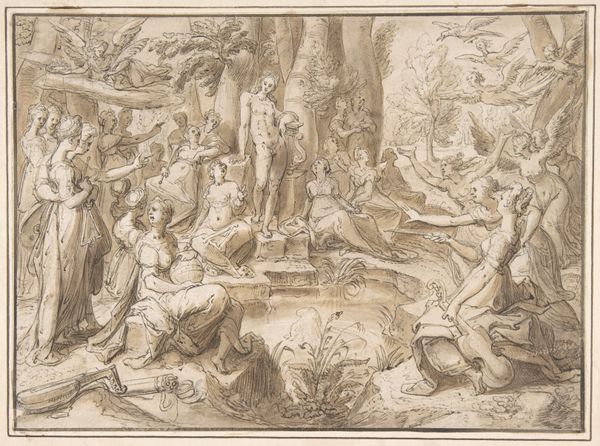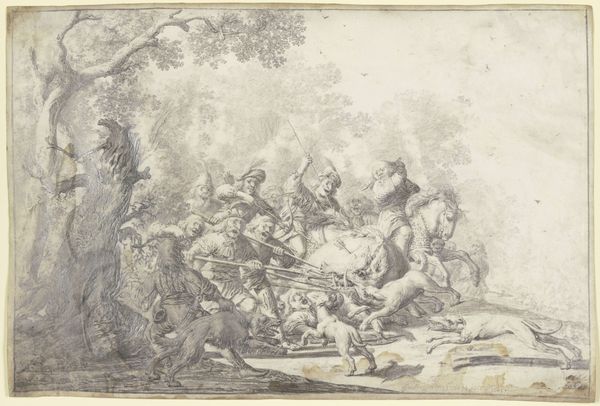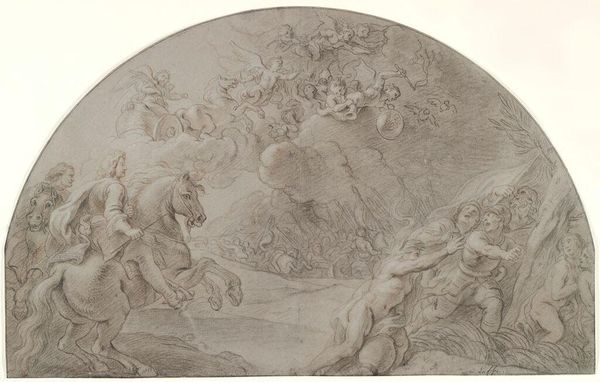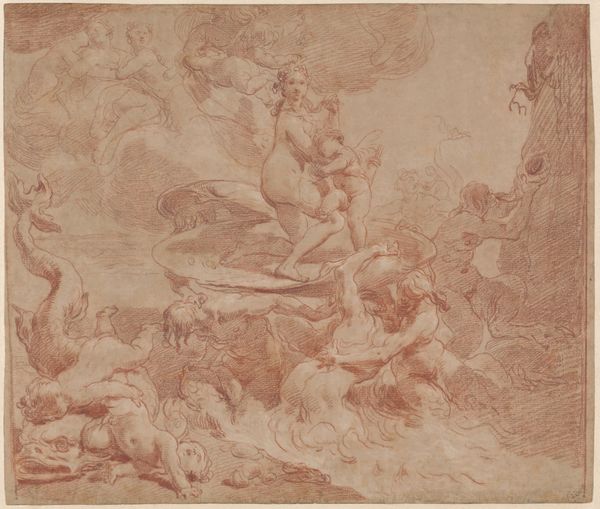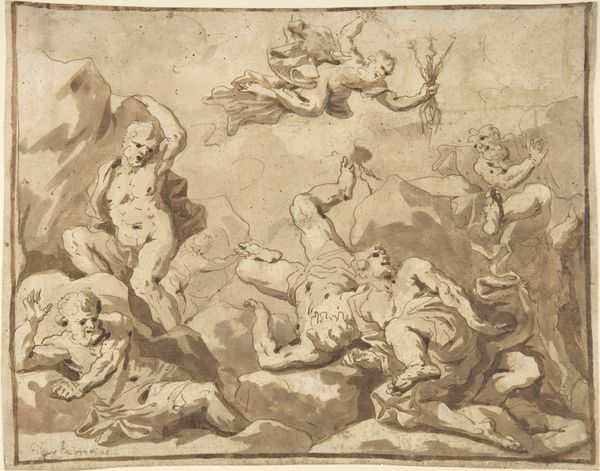
drawing, ink
#
drawing
#
allegory
#
baroque
#
ink painting
#
landscape
#
figuration
#
ink
#
history-painting
Dimensions: height 326 mm, width 430 mm
Copyright: Rijks Museum: Open Domain
Curator: Let’s turn our attention to this remarkable ink drawing, "Amaryllis en Myrtillo," by Jan de Bisschop, created sometime between 1648 and 1671. It’s part of the Rijksmuseum collection. Editor: It strikes me immediately as languid. The sepia tones, the swirling composition... it evokes a dreamlike, perhaps slightly decadent atmosphere. The figures are arranged almost asymmetrically but united by this sort of compositional harmony. Curator: Indeed. It illustrates a scene drawn from pastoral literature—specifically the story of Amaryllis and Myrtillo. This tale, and images of it, are frequently associated with themes of idealized love and innocence. Consider the symbolic weight of Cupid present overhead. Editor: He’s rather dramatically poised, bow drawn. The gaze travels directly from him, down through the central figures in their sylvan repose. I’m curious about de Bisschop’s use of ink; it gives a very specific texture to the light and shadow. Notice how it defines drapery in almost sculptural folds. Curator: And observe how that baroque style is prevalent in the sweeping gestures, the emotionally charged faces and idealized forms. It visually aligns this intimate scene of love with grand historical paintings of the time, perhaps elevating the status of love within the viewer's eyes. De Bisschop subtly asserts the enduring relevance of the classics, doesn’t he? Editor: Precisely. We are looking at not only line and texture but a statement. It isn't merely pastoral— it is Baroque theatricality compressed into the intimate space of a drawing. Each wash seems calculated to build both drama and, paradoxically, this feeling of dreamlike stillness. Curator: Thinking of it through the prism of cultural memory, the allegory served not just as visual pleasure, but as a bridge. A bridge between classical narratives of love and devotion and the ongoing realities of 17th-century society. The drawing, though subtle in medium, is grand in the way it asks its viewers to see themselves in those very tales. Editor: You're right; it challenges assumptions of both narrative and medium. What appears effortless reveals itself to be the result of enormous structural precision. It offers a rich, meditative experience, lingering with you long after you've walked away.
Comments
No comments
Be the first to comment and join the conversation on the ultimate creative platform.
